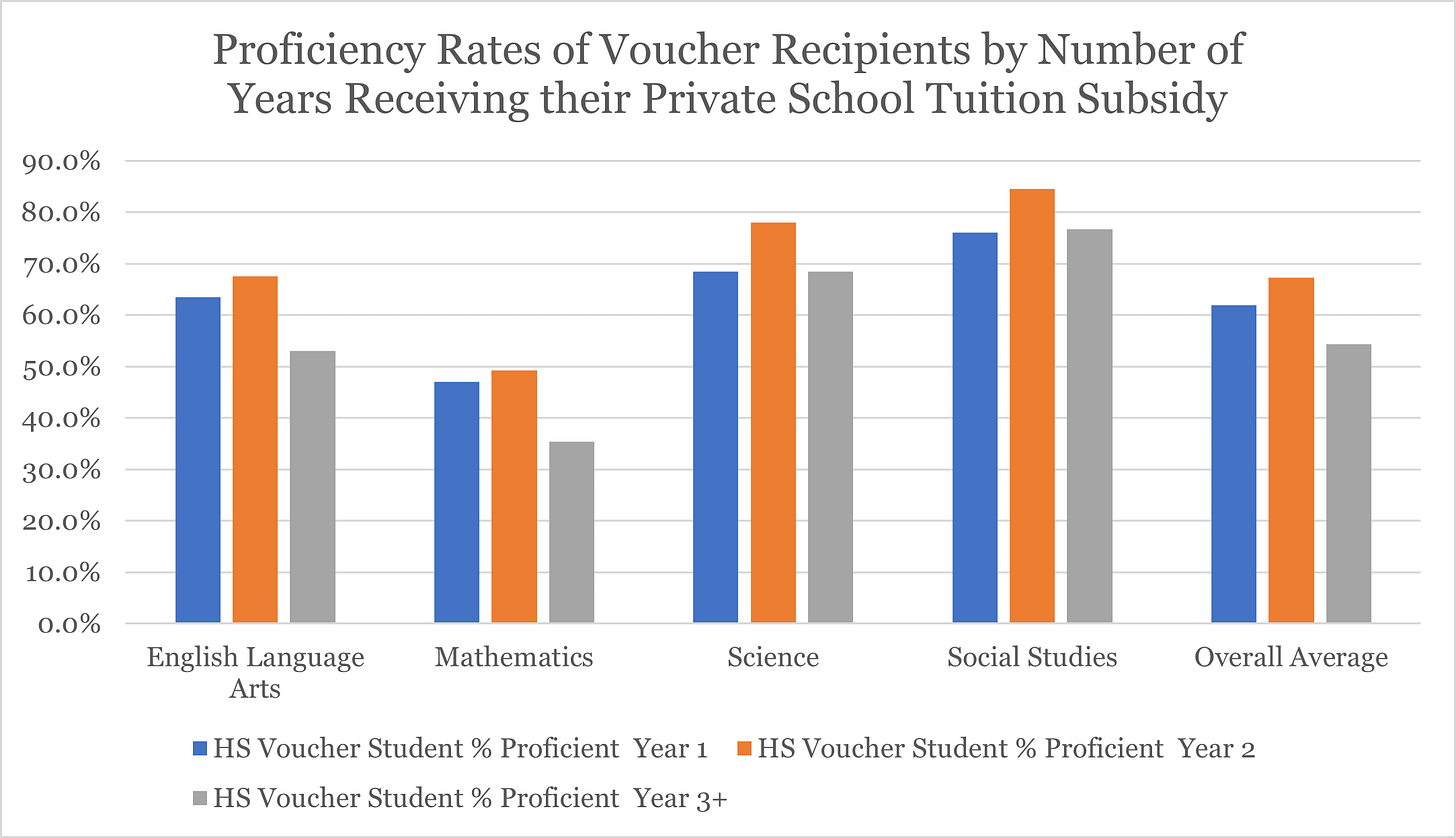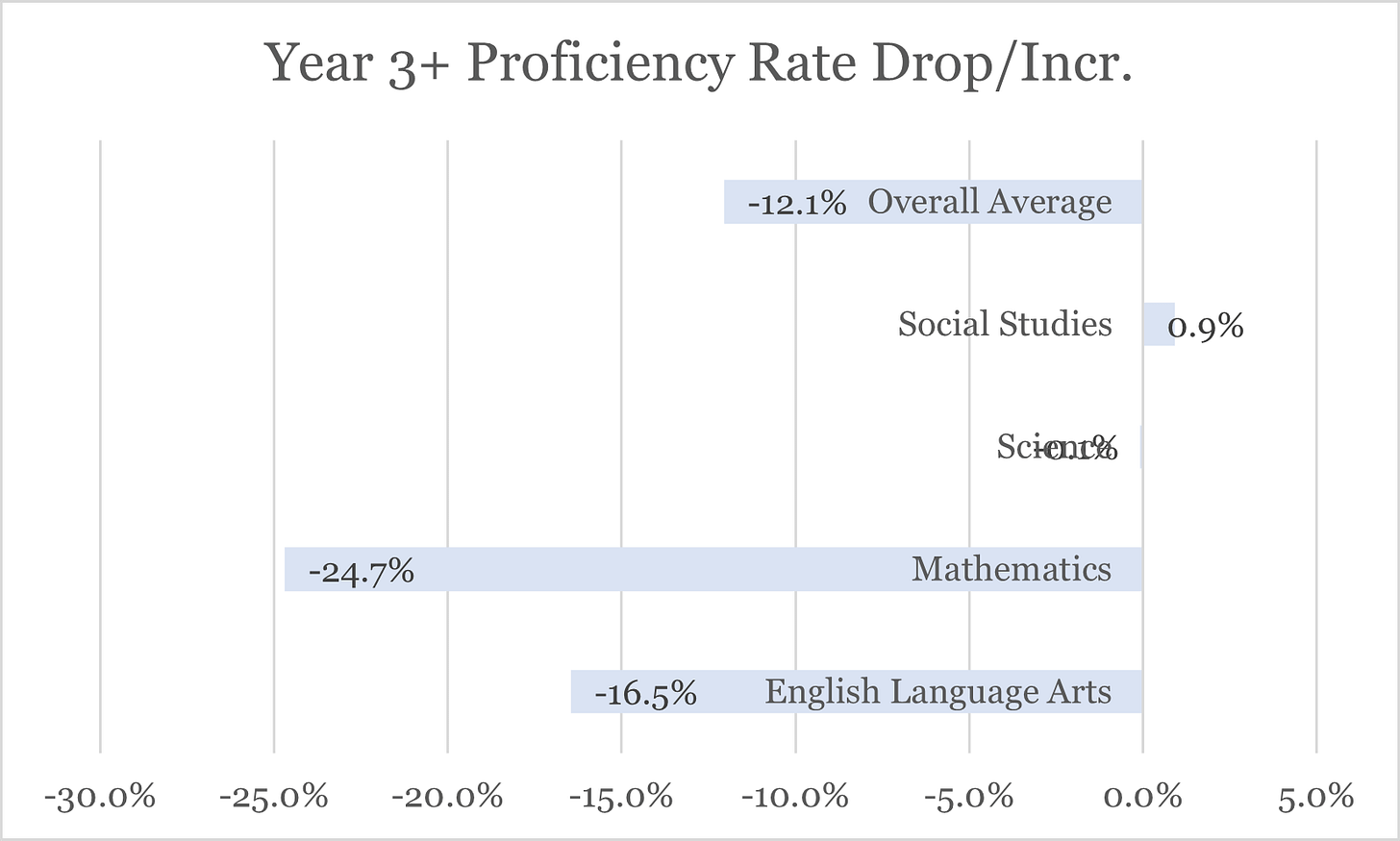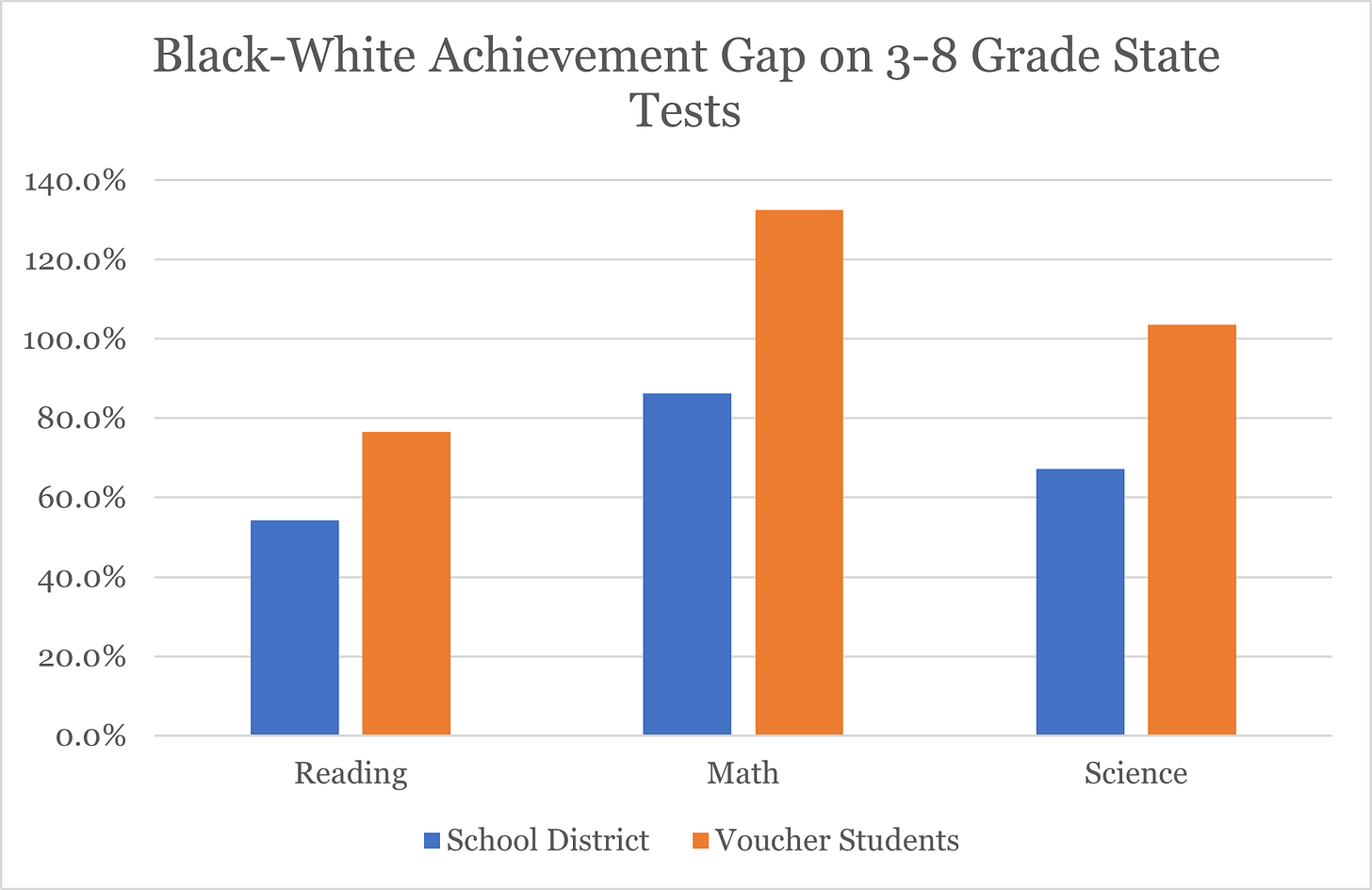10th Period: Ohio High School Voucher Data: Longer You Take a Voucher, Worse You Do
One thing you’d expect to hear a lot from voucher proponents is that students taking private school tuition subsidies do better the longer they’re in the private schools taxpayers are paying.
I mean, assuming these “choices” are so vastly superior to “failing” public schools, right?
Yet you never hear that argument. Now I know why: according to state test data, the longer students take vouchers, the worse they do on state tests — in some cases a lot worse. Especially in high school.
Here is how students perform on state High School proficiency states, depending on how long they’ve been taking vouchers. You can see pretty clearly that especially in English and Math, students do markedly worse if they’ve been taking vouchers for 3 plus years than they do if they’ve only been taking it for a year.
This provides some pretty compelling evidence that students taking vouchers are better prepared by public schools, but once they enter the private system, that success wanes. Only in Social Studies is there an increase, but it’s only a 0.9% increase. Math drops by nearly 1/4. Overall, there’s, on average, a 12.1% drop in proficiency rates the longer a high school student takes a voucher.
The change is less bad in the 3-8 grade tests. There’s a 4.5 percent drop in math, but an increase of 5 percent in reading and a 1.5 percent increase in science.
Overall, though, voucher students tend to do worse on state tests the longer they take the voucher, suggesting that the private schools taking hundreds of millions of dollars a year in taxpayer subsidies aren’t helping students improve their academic success. This comports with national data suggesting that, on average, America’s public schools do a better job educating students than the private system, adjusted for poverty.
However, there is something very troubling about 3-8 grade tests among voucher students — an absolutely frightening achievement gap between Black and White students.
Yes, the achievement gap is troubling for public schools too. But wow is it pronounced among voucher students. White voucher students overall have about double the proficiency rate of Black voucher students. And, especially on math tests, White voucher students vastly outperform their Black peers — scoring 132 percent better.
Again, neither the public nor the private achievement gap is acceptable or good. But for pro-voucher proponents to act like vouchers will “save” Black students from “failing” public schools is ridiculous. The data show that it’s far more likely that Black students will do much worse than their White peers taking a private school voucher than if they attend a public school.
And we already know that voucher students are far more likely to be White than the district from which they came. So, again, voucher proponents have some explaining to do.
Let me put it simply:
-
Generally, Voucher students do worse on state tests the longer they take vouchers.
-
The Black-White achievement gap is much greater among voucher students than public school students.
-
Private Schools that accept Vouchers take a Whiter population of students than the districts from when the students come.
I just have one simple question: How is it again that Vouchers provide “better” opportunities for students of color who are being “failed” by public schools, as voucher proponents continuously claim?
Because Ohio data sure suggest that students of color are best served by their local public schools, not the private schools who are more reluctant to take them, even with significant taxpayer-funded tuition subsidies.
This blog post has been shared by permission from the author.
Readers wishing to comment on the content are encouraged to do so via the link to the original post.
Find the original post here:
The views expressed by the blogger are not necessarily those of NEPC.



